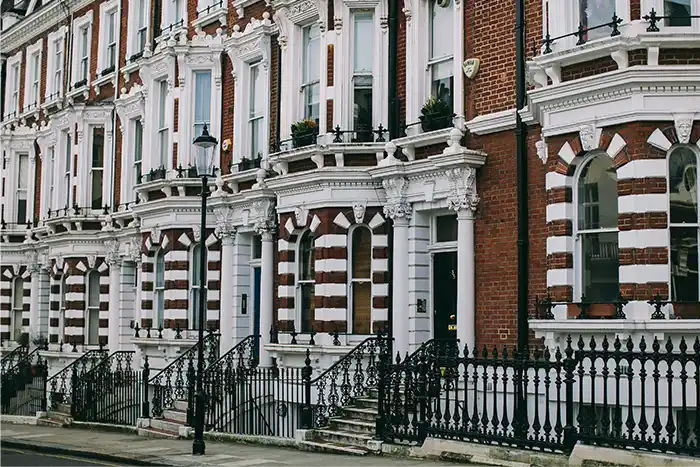Ask yourself this question first – when was your home built? It will give you an immediate clue into what the energy efficiency of the property is likely to be. Ideally you’re looking for it to have an Energy Efficiency Rating of at least C, the target most homes need to achieve under the Government’s Net Zero commitment. But unless you’re living in a property built in the past 35 years, chances are you’re seriously underperforming. Recent research shows:
-
Almost 83% of homes built post-1990 currently holding a rating of C or above
-
Under 39% of homes built before 1990 meet this grade
-
Among homes built in England before 1919, only 20.7% have EPC rating C or above
In many ways it’s a bit of a no-brainer to suggest that the newer the home is the better its energy performance. Building technology, materials and insulation have all improved out of sight in the last 30 years.
But the stark fact is that 29 million homes underperform to the Government’s benchmark. 
What Is the Problem With Lower-Rated Properties?
The problems are significant. With over 60% of the nation’s housing stock carrying an EPC rating of ‘D’ or below, we are a nation wasting precious energy on a daily basis. Around 85% of the nation’s homes are heated by gas, the price of which continues to rise pushing up the cost of living. In addition, common illnesses caused by cold homes in the winter currently costs the NHS about £1.4 billion every year.
So concerned is the UK Green Building Council, one of the champions of sustainable building and the move towards Net Zero, that it is recommending to the Government that 19 million houses need to be put in order and moved from D rating to C rating within the next 10 years. The remaining 10 million would then need to be sorted out by 2050 if energy targets have any chance of being met.
29 Million Homes Need to Be ‘Retrofitted’ for Economy
The UK has one of the oldest and leakiest housing stocks in Europe, possibly in the world. Yet 80% of homes that are lived in today will still be inhabited in 2050. Without action they will continue to waste increasingly expensive heat as it leaks out of every uninsulated wall, roof and door. Experts agree that there is a national need for an ‘energy retrofit’
Home retrofit is the upgrading of homes to increase energy efficiency. At the same time this reduces or removes their reliance on fossil fuels for heating. A part of the problem here is the fact that architects no longer concern themselves with heating – they don’t always have the latest information about how to incorporate energy-saving technologies, or ‘clean tech’ into their designs,
In theory, retrofitting encompasses:
-
Insulating homes: which can include a range of technologies and techniques such as roof insulation, cavity wall insulation, floor insulation, external insulation and high-performance glazing.
-
Replacing gas with electric*: removing a traditional gas boiler and replacing it with other forms of heating including Infra-Red often linked to solar panels
-
Reduction of energy use: through technology such as smart sockets and heat recovery systems to prevent wasted energy.
*NB: Much advocacy has been given to the installation of heat-pumps. The problem here is that over 50% of the homes in the UK are unsuitable for heat pumps – which have significant costs both for installation and maintenance. Some of those properties could be made suitable for heat pumps but the costs of doing so are prohibitive.

So What’s the Plan, Stan?
If you’re a homeowner with old premises, and even more so if you’re a landlord, what do you plan to do. With the price of gas continuing to soar, the first part of any plan might just be to start saving money on wasted energy right now, banking the benefits to fund future retrofit requirements.
A great start is to pivot your home heating strategy to Infrared heaters that provide a short-term tactical cost benefit by heating people rather than empty space near your ceilings. As they give instant heat you can turn them on and off where and when warmth is required, significantly reducing heating bills. Once you try Infra-Red you’ll quickly become converted to the lower costs and space savings over gas boiler and radiator systems, leading the way for you to devise an entire retrofit strategy incorporating solar panels.
Let’s be honest, Stan needs to become self-sufficient. Infra-Red is the key – and we’ll be more than happy to help him create the plan!
Contact Us at customer.support@kiasa.co.uk or call 0116 488 5150



